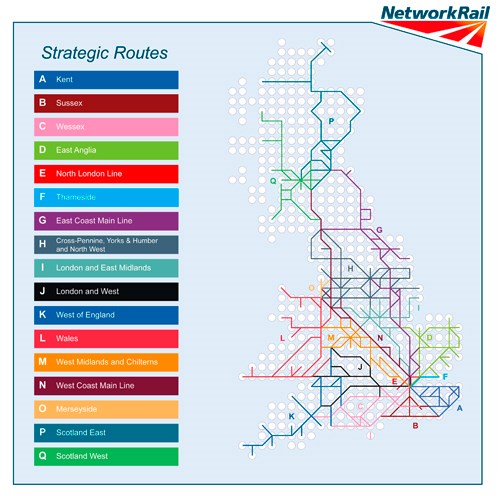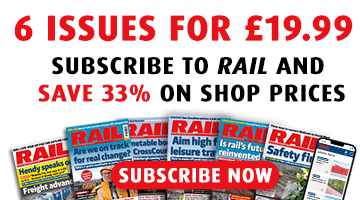RMDs should play a much bigger role in enhancements. They are the senior NR managers closest to NR’s customers, but on recent evidence they appear just as helpless in the face of over-running engineering as the train operators. They should have to be convinced that IP’s plans are robust and capable of being delivered before work takes place. And IP’s arguments must be more convincing than simply applying an average to previous work and then saying that this means future work will not be late.
Each RMD could drive major improvements across NR by simply trying to do better than their counterpart on the next route. They could also do better if they had more local resources, to make the best use of the capacity of their routes. While government talks of local power and accountability, NR has created a centralised railway run from Milton Keynes. It is nowhere near as devolved as many people think.
It’s also NR’s IP division that sits behind the series of delays occurring on many upgrade projects, such as the electrification of the Great Western Main Line (late and with costs far higher than originally suggested) and the electrification of the trans-Pennine route through Huddersfield (late and now with no completion date). A similar project for the Midland Main Line was required by government to have been completed in the current 2014-2019 Control Period, but has slipped into 2020.
 Analysis of recent NR enhancement programme updates reveals that a lack of resources is at the heart of many of these delays. This is not just NR’s fault - the Government asked for more than the railway could deliver, showing that it was not an informed customer.
Analysis of recent NR enhancement programme updates reveals that a lack of resources is at the heart of many of these delays. This is not just NR’s fault - the Government asked for more than the railway could deliver, showing that it was not an informed customer.
DfT appears to have no overall strategy for the railway and has instead chased the headlines that come from announcing major projects. It doesn’t help that the price tags DfT initially attaches to these projects are subsequently exposed as woeful underestimates. This puts them and the railway on their back foot in terms of public perception and means that ministers cannot deliver what they’ve promised.
Regulator the Office of Rail and Road cannot escape censure either. ORR has the role of checking that government’s plans can be delivered for the money government is offering. It commissioned numerous reports into many aspects of NR’s work in the run-up to the current Control Period, but in accepting government’s overall demands it appears equally naive about the industry’s ability to deliver.
If IP is divorced from the passenger-facing realities of running a railway, it can be argued that NR itself faces more towards its owner (the Government) than its customers (the train operators). It’s not only the call that the Transport Secretary has on NR’s chairman, but also from what Apprentice star Nick Hewer accurately identified as “following the money” in his recent BBC2 rail documentary. Do this and the road leads to government, with NR receiving £3.6 billion from it in 2013/14. This compares with the £2.1bn it received in charges from its customers, the train operators.
If diagnosing the problem that NR is aligned more to government than to its customers is simple, finding an answer is considerably harder, if not impossible.
Ideally, NR should receive its income from train operators, including freight and open access companies - they are the ones that use its services. But hiding behind the large sums of money that flow round the industry is a huge amount of enhancement work. Government support in building a better railway is welcome, and it’s right that taxpayers contribute because the country should benefit overall from a better railway. But this increased spending has disguised the good work NR has done in reducing day-to-day costs by becoming more efficient and doing more with less.
Feeding this improvement money to NR via the TOCs exposes a tension between the short-term nature of the operators and the long life of improved infrastructure. The massively improved Reading station and its radically remodelled approaches will last considerably longer than its main user, First Great Western.
Passing money through the TOCs would likely put many that today pay government a premium into subsidy, with little likelihood that the real reasons will be understood in a ‘sound bite’ debate surrounding subsidies and profits. It would only serve to complicate an already confused picture.
Line upgrades
Yet it’s surely sensible that train operators are exposed to the costs of (and the decisions surrounding) the infrastructure they use. In the public sector, Transport for London operates the capital’s Underground system in a vertically integrated fashion with its hands on track and trains, and it has delivered successful line upgrades involving both sides of the wheel-rail interface.
There is now more capacity on the Victoria Line, while the Northern and Jubilee Lines have also been improved. New trains run on its sub-surface lines, even though TfL and London Underground have run into severe difficulties in upgrading aged signalling on those lines, and have now ditched two contractors.
The signalling problems surfacing on LU are also evident on NR. With major projects to shift control of trains from hundreds of signal boxes to a handful of Route Operating Centres (ROCs), NR has a tidal wave of work approaching. And that’s before any thought is given to Chief Executive Mark Carne’s hobby horse, the ‘Digital Railway’ - progressively rolling out cab-based signalling nationally that does not yet exist.










